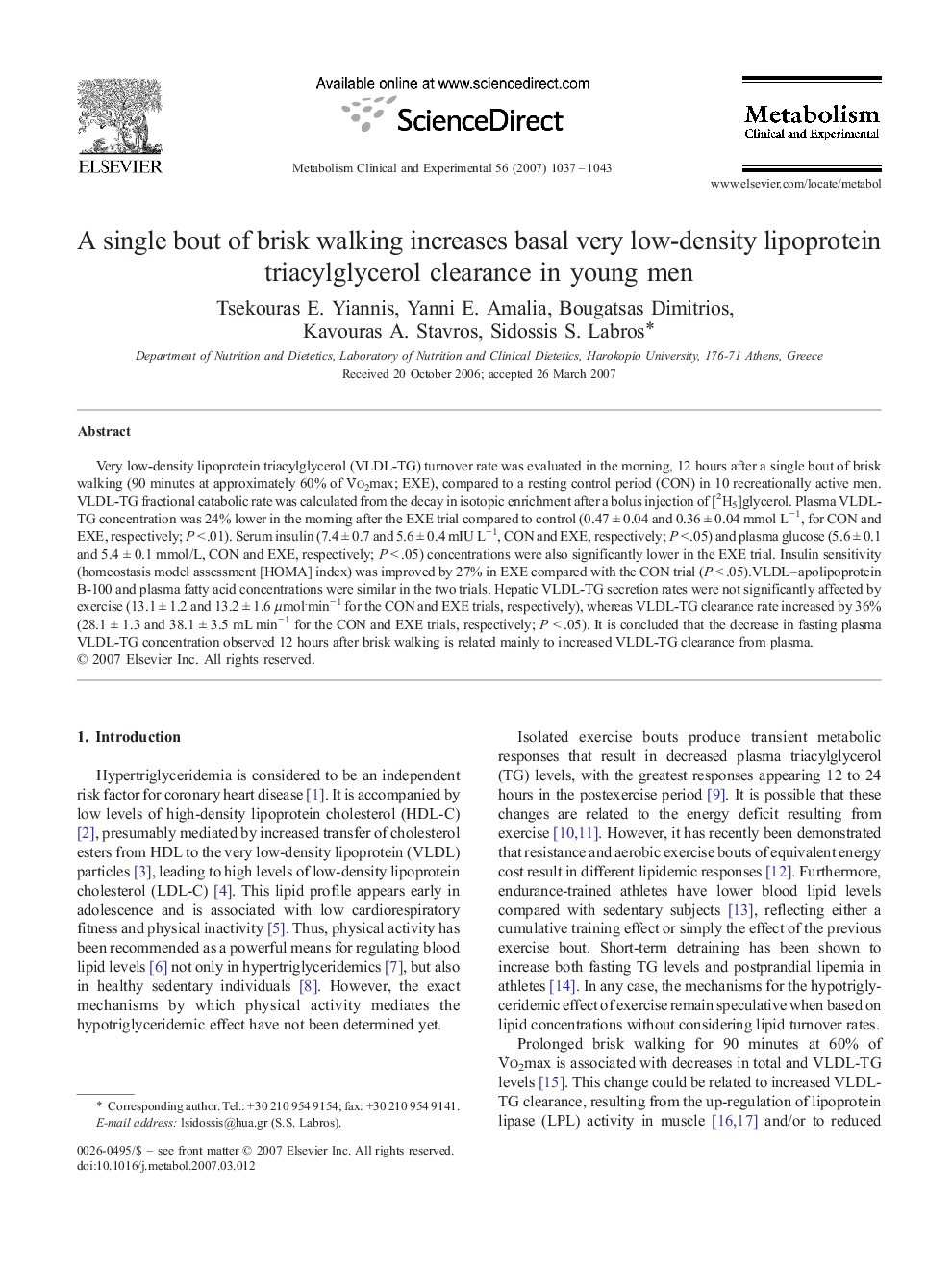| Article ID | Journal | Published Year | Pages | File Type |
|---|---|---|---|---|
| 2807389 | Metabolism | 2007 | 7 Pages |
Abstract
Very low-density lipoprotein triacylglycerol (VLDL-TG) turnover rate was evaluated in the morning, 12 hours after a single bout of brisk walking (90 minutes at approximately 60% of VÌo2max; EXE), compared to a resting control period (CON) in 10 recreationally active men. VLDL-TG fractional catabolic rate was calculated from the decay in isotopic enrichment after a bolus injection of [2H5]glycerol. Plasma VLDL-TG concentration was 24% lower in the morning after the EXE trial compared to control (0.47 ± 0.04 and 0.36 ± 0.04 mmol Lâ1, for CON and EXE, respectively; P < .01). Serum insulin (7.4 ± 0.7 and 5.6 ± 0.4 mIU Lâ1, CON and EXE, respectively; P < .05) and plasma glucose (5.6 ± 0.1 and 5.4 ± 0.1 mmol/L, CON and EXE, respectively; P < .05) concentrations were also significantly lower in the EXE trial. Insulin sensitivity (homeostasis model assessment [HOMA] index) was improved by 27% in EXE compared with the CON trial (P < .05).VLDL-apolipoprotein B-100 and plasma fatty acid concentrations were similar in the two trials. Hepatic VLDL-TG secretion rates were not significantly affected by exercise (13.1 ± 1.2 and 13.2 ± 1.6 μmol.minâ1 for the CON and EXE trials, respectively), whereas VLDL-TG clearance rate increased by 36% (28.1 ± 1.3 and 38.1 ± 3.5 mL.minâ1 for the CON and EXE trials, respectively; P < .05). It is concluded that the decrease in fasting plasma VLDL-TG concentration observed 12 hours after brisk walking is related mainly to increased VLDL-TG clearance from plasma.
Related Topics
Life Sciences
Biochemistry, Genetics and Molecular Biology
Endocrinology
Authors
Tsekouras E. Yiannis, Yanni E. Amalia, Bougatsas Dimitrios, Kavouras A. Stavros, Sidossis S. Labros,
